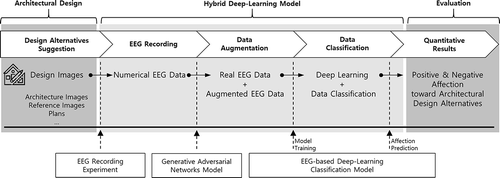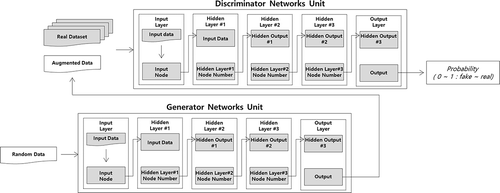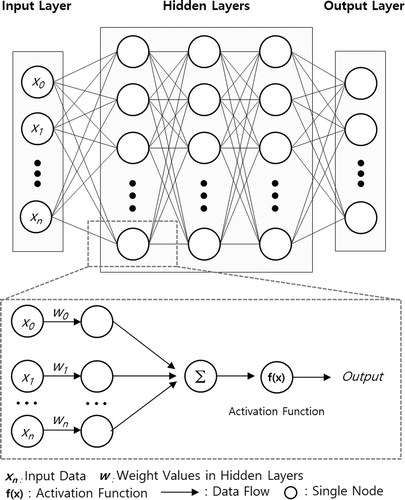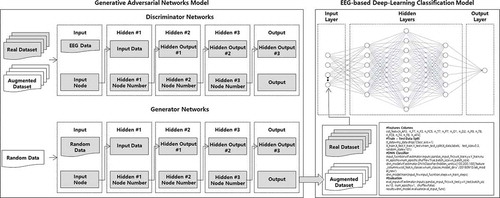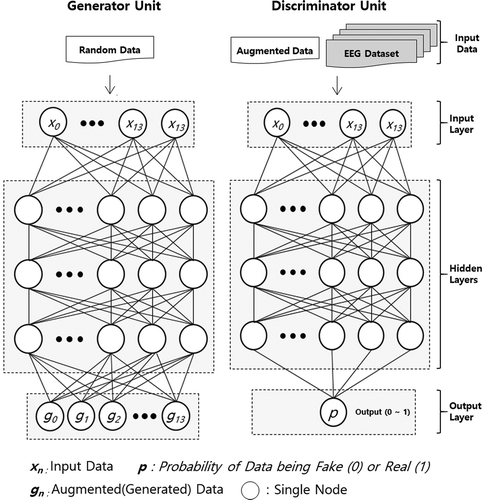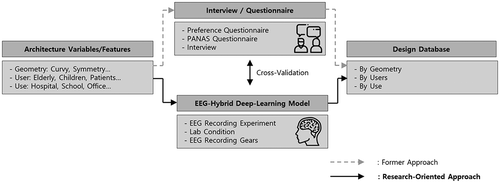Figures & data
Figure 7. (a) Subject recording EEG, (b) EmotivPro software interface with recording EEG (Emotiv Citation2018), (c) “EMOTIV EPOC+ 14 channel mobile EEG” device technical specifications (Emotiv Citation2018).
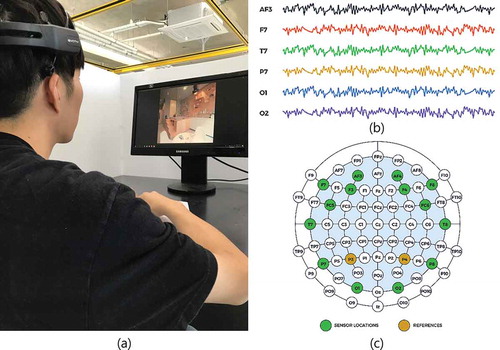
Figure 8. EEG-based Deep-learning classification model training dataset: (a) Features: 14 channels of recorded EEG data, (b) Affection: Re-classified PANAS Questionnaire Results, (c) Labels: “Negative” = 1 and “Positive” = 2, (d) Subject Initials, (e) Frequency (Hz).
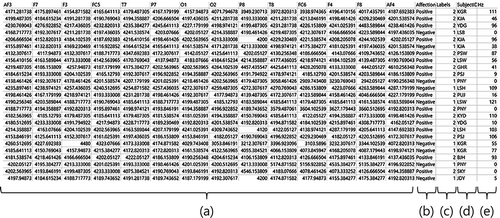
Table 1. Comparison between real data and augmented data through iterations (Positive affection).

